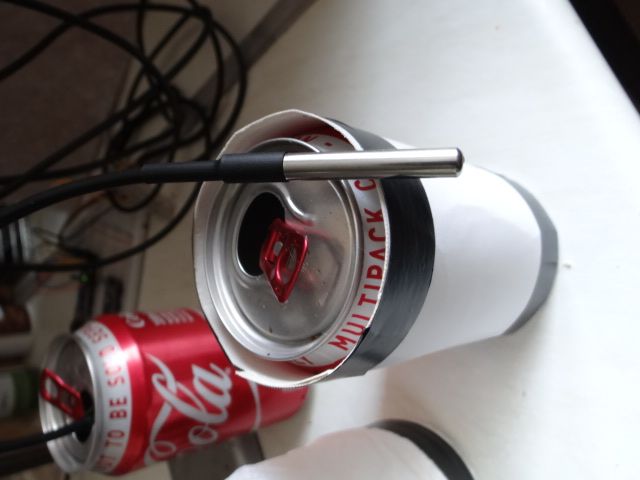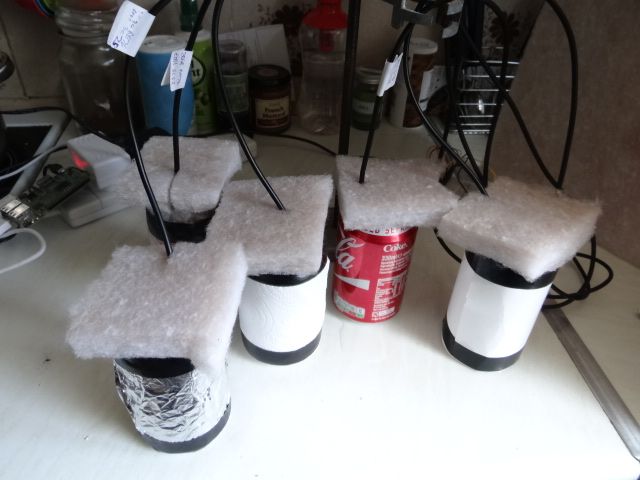Recently a post asked about the best material for insulating a model boiler and I suggested the thinness of any insulation kept within scale size meant the material wouldn't make much difference to heat loss.
Worth testing so I knocked up an experiment.
I wired 5 waterproof DS18BS temperature sensors in parallel and connected them to an Arduino Nano programmed to read them once per minute and record the results on a RaspberryPi (any computer would do). The sensors have a unique address, so the computer knows which is which:

Then I insulated 4 used Coke Cans (330ml) with :
- 2 layers of Kitchen Tissue Paper,
- one layer of Card,
- 1 layer of Bubble Wrap,
- 4 layers of loose Aluminium Foil.
- A fifth can was left uninsulated as a control.
After inserting the sensors each can was filled with hot water from a kettle, covered with a pad of fibre insulation, and the Nano took measurements whilst I went walkies.

Waterproofed temperature sensors looks suspiciously like a detonator, but they're completely innocent:


Results:

At 20C room temperature it takes about 110 minutes for the cans to lose half their heat and all the insulators are similar, not much better than an uninsulated plain can.
The card covered can is actually worse: most likely explanation is the card was damp and the extra cooling was due to evaporation.
Best performers are Kitchen Tissue Paper and Aluminium Foil; both did better than bubble wrap, which is surprising.
Lessons learned:
- Damp insulation is worse than no insulation at all
- Thin layers don't insulate well
- Of the set of materials tested, foil and tissue were top performers. Might be worth sandwiching them.
Turfed out of the kitchen in disgrace by the cook, but if I get the chance I'll try other materials later.
Dave
Edited By SillyOldDuffer on 04/05/2021 19:24:46
not done it yet.









